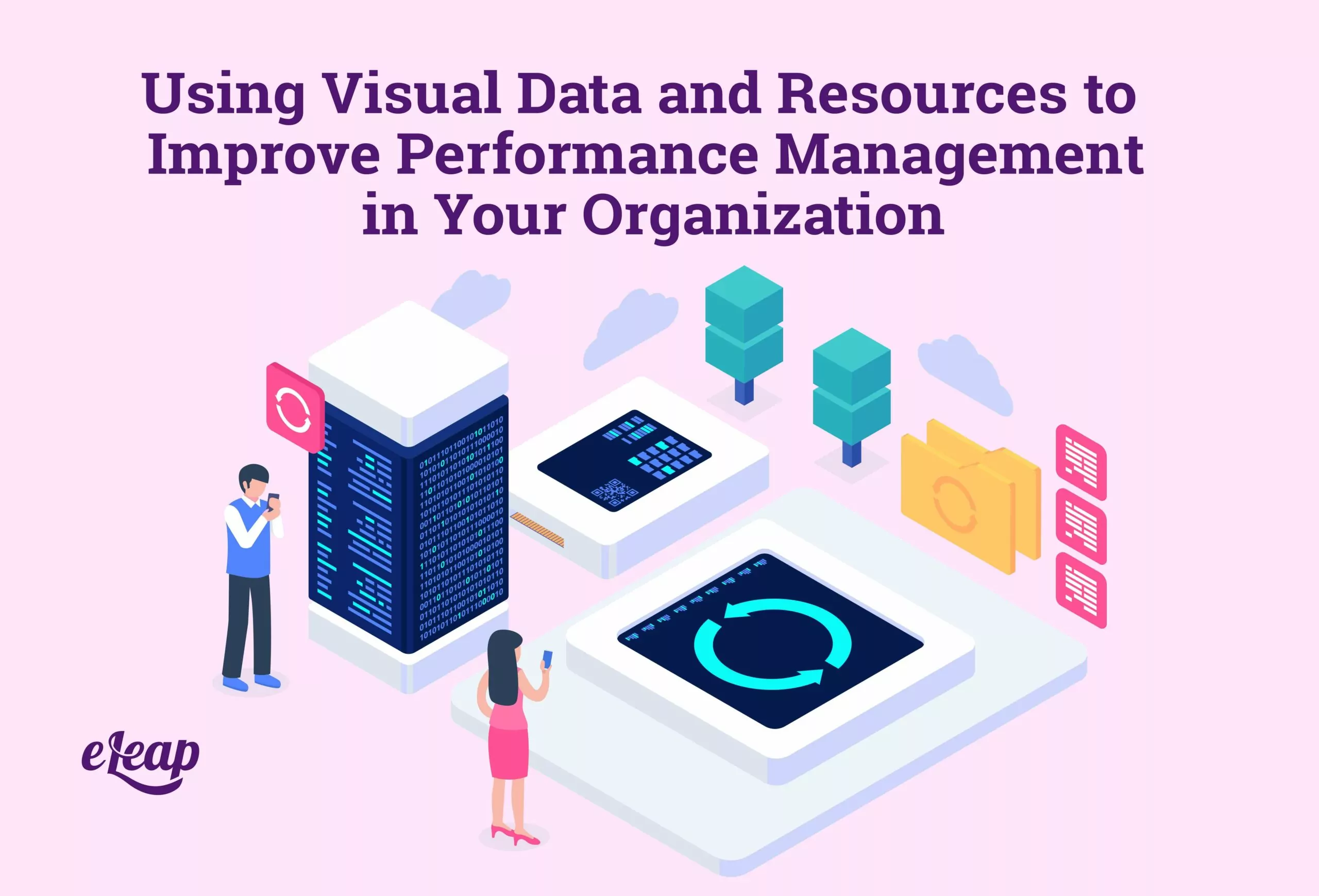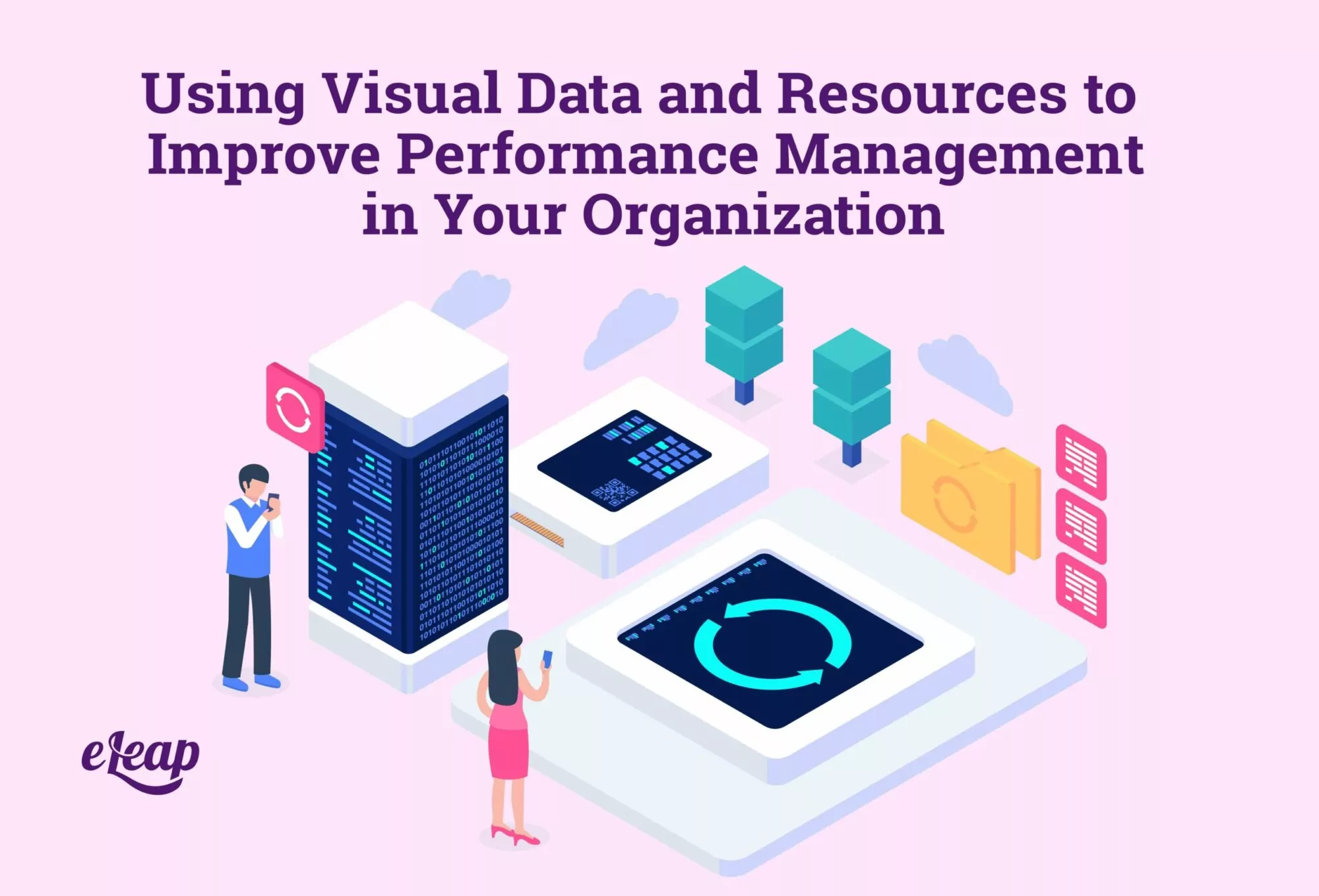Using Visual Data and Resources to Improve Performance Management in Your Organization

People have always been a fan of visuals, but they are now more popular than ever before. Companies that are utilizing the best training and learning tools will generally have an idea of how each employee performs best and what kind of learning provides them with the best chances of success. However, just about everyone can benefit from a more visual look at their performance.
Right now, most companies are still relying on the age-old sit-down review where the manager essentially goes over the performance over the period being measured and then tries to help employees make new goals for the future or identify where they are struggling so that they can make improvements moving forward. This is all well and good, but what if you could show people where they’re missing the mark? Even better, what if you could do it in real-time, not six months or a year later?
That’s the future of performance management, and it’s a future your organization needs to get behind.

What Kind of Visual Data?
Data is everywhere these days. It’s found on phones, computers, in email files, and more. Visual data is becoming increasingly popular, as well, because it offers a way to utilize the information presented. Visualization of data helps give meaning to a lot of numbers and data that companies can utilize to improve their business operations. Data visualization can include anything from charts, diagrams, and images, as well as a well-designed dashboard for users that includes integrated data and performance metrics.
The right kind of visual data can help decision-makers make more efficient moves for the organization and even engage the employees in understanding the power of this data and what it means for the future of the business. In the data, you’ll want to be measuring things like:
Performance metrics
Engagement metrics
L&D metrics (learning and development)
Organizational metrics
Combining all of this will give you a big picture look at how your company stacks up. It will also help employees feel like they are part of something bigger, and give them the tools to measure their role in the company.
Humans process visual images much faster than they read and comprehend text. And when you consider that today, as much as 90% of the information that people encounter is in visual form, it’s no wonder that it’s becoming part of your organizational metrics and performance management strategy.
The Performance Management Process
Of course, you can’t just dive into visual data if you aren’t ready for total performance management in your organization. Implementing and understanding this strategy, along with choosing a worthy PMS, should be first on your list. Performance management has several steps and stages through the planning, tracking, developing, and validating your visual data and employee management.
Today’s employees want more feedback and employers want to ensure that managers feel like they are a valued asset. By getting people engaged with visual data and metrics, you can show everyone firsthand how they’re performing, what they can improve, and so forth. This kind of attention to detail also makes people feel special because they’re getting dedicated attention to help them improve.
Visual Data Tools
Today, the market is rife with a variety of tools and platforms that you can use to develop, monitor, and manage visual data and other resources. Your organization may already have the best tools and platforms in place and not even know it. Although online and open-source tools are great for those who want something a little more unique or customized, some of the classic software does just as well:
- ChartExpo
- Microsoft Excel
- Tableau
- MS Power BI
- Piktochart
Of course, some organizations will also find a host of data visualization tools in their LMS and PMS platforms that they can use to turn valuable insight into actionable items for their employees. Just like most learning, people tend to catch on more quickly if you provide them with a visualization of the data and not just a list of statistics or numbers.
For the Anti-Metrics Crowd
Of course, some organizations have creatives and other people who aren’t as interested in the numbers, or who may be more confused than engaged by a chart, graph, or other visual collection of the data that encompasses their performance. For these employees, convincing them that visual performance tracking and management is actually a lot simpler than you might think.
For starters, you have to be excited about the metrics. If you are rolling your eyes at the standard performance review system and not actually trying to do anything about it, your employees will surely follow suit. Make sure that you utilize the reporting tools in your LMS and PMS to keep track of how employees are learning and growing within the organization. Instead of setting “sales goals” or metrics benchmarks specifically, find out how you can help your employees upskill and improve themselves by learning how to read and interpret these metrics for themselves.
Conclusion
To effectively manage performance and make improvements for employees and the organization alike, leaders and managers need to understand the full scale of their organization and know what is going on in all areas at all times. By utilizing data visualization, organizational leaders and employees will be able to identify trends, patterns, and relationships that can help make positive changes within the organization. Otherwise, all the data can be difficult to put to use and even more difficult to explain to the average employee.
The future is in performance management and L&D initiatives that take valuable data to another level. It’s about real-time monitoring and course correction instead of annual reviews and a reactive approach to performance management. Using visual data can help leaders and managers better explain expectations and set goals for employees, and it can offer those employees the chance to understand exactly where they stand and how their role impacts the organization. When you give people that kind of power, they’ll be eager to excel, upskill, and grow within (and for) your organization.